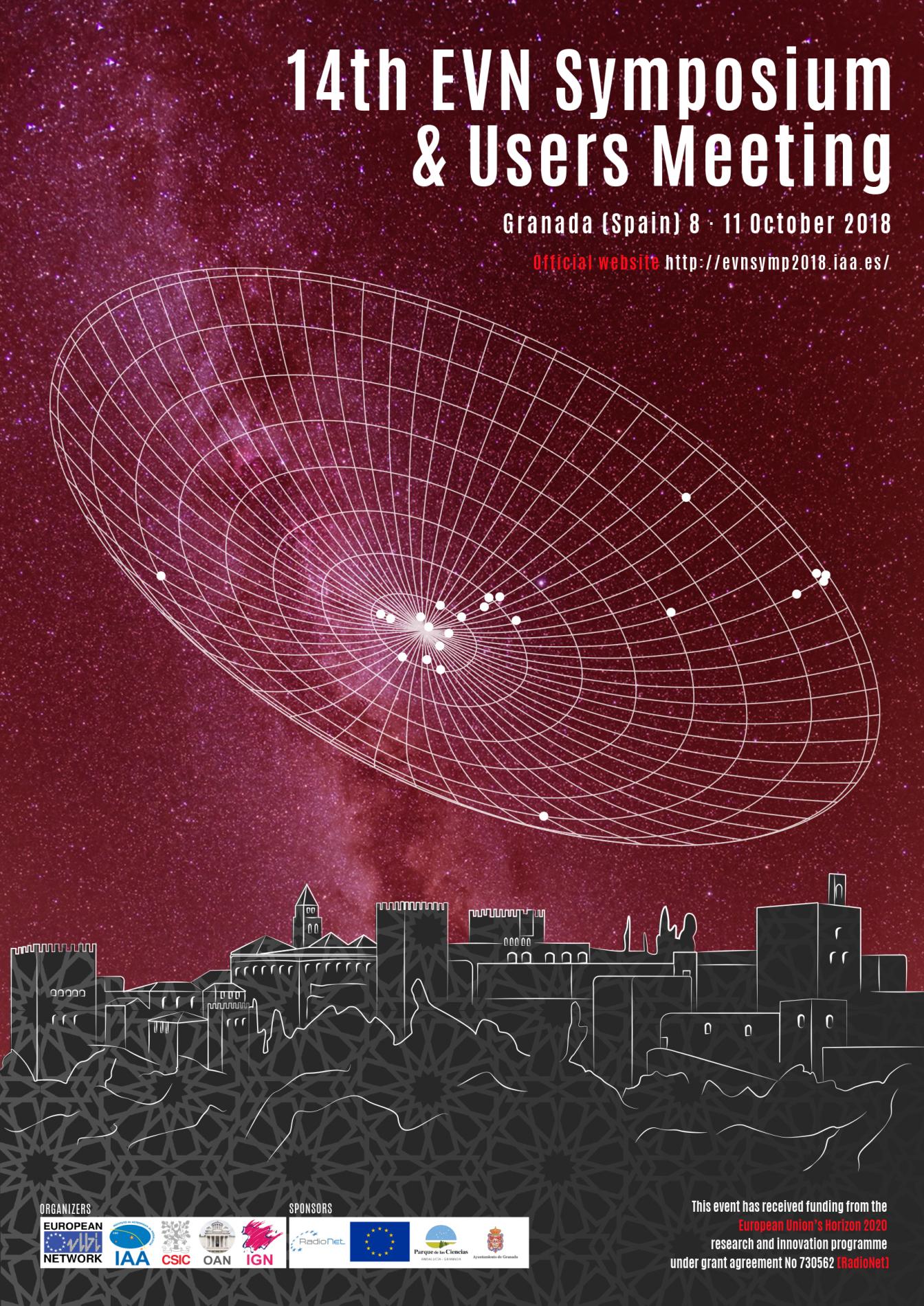Researchers from around the world debate in Granada the latest advances in the observation of the universe in radio
The European VLBI Network (EVN), a network of radio telescopes distributed throughout Europe and Asia, with additional antennas in South Africa and Puerto Rico, holds its fourteenth symposium in Granada. Over one hundred and thirty researchers and technologists from around the world will discuss the latest scientific results and technological developments in the field of radio observation
Between the 8th and 11th of October, more than one hundred and thirty researchers from around the world will present in Granada the latest advances in the observation of the cosmos in radio waves, on the occasion of the XIV Symposium of the European VLBI Network (EVN), co-organized by the Institute of Astrophysics of Andalusia (IAA-CSIC). The meeting will be opened by Rosa Menéndez, president of the Higher Council for Scientific Research (CSIC), who will afterwards visit the IAA facilities.
The EVN uses a technique known as interferometry, which consists of observing an object with several antennas geographically separated, which gives the equivalent of a telescope the size of the distance separating the antennas. And, given that it is a network that includes radio telescopes from Europe and Asia above all, but also from South Africa and Puerto Rico, it is capable of carrying out observations with a unique precision. It is, today, the most sensitive long baseline radiointerferometry network in the world.

"This edition of the EVN symposium is dedicated to discussing the role of long baseline radiointerferometry in the new era of radioastronomy that will be opened imminently with the arrival of the Square Kilometer Array, a project of which Spain is a member of recent incorporation and that, in Spain, is coordinated from the Institute of Astrophysics of Andalusia (IAA-CSIC) ", points Iván Agudo, researcher of the IAA and organizer of the symposium.
The scientific sessions will discuss recent findings in various fields of astrophysics, such as supermassive black holes in galactic nuclei, starbursts, stellar evolution or the final products of star life, such as pulsars and supernovas; the recent technological advances in the field of radiointerferometry will also be discussed; finally, the functioning of the EVN will be assessed among its users and international cooperation will be encouraged.
"As a novelty, we have also included a session devoted to reviewing new coordinated observation projects with new instrumentation at all wavelengths, in particular with the Cherenkov Telescope Array - a project in which the IAA also participates -, even involving observations with detectors of gravitational waves ", concludes Iván Agudo (IAA-CSIC).
The symposium, to be held in the Parque de las Ciencias (Granada), has been organized by the EVN network, the Institute of Astrophysics of Andalusia (IAA-CSIC) and the National Astronomical Observatory, and has the support of Radionet, the Parque de las Ciencias and the City Council of Granada.
Instituto de Astrofísica de Andalucía (IAA-CSIC)
Unidad de Divulgación y Comunicación
Silbia López de Lacalle - sll[arroba]iaa.es - 958230532
http://www.iaa.es
http://www-divulgacion.iaa.es

